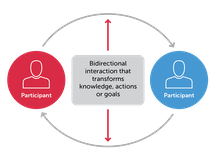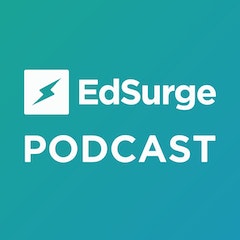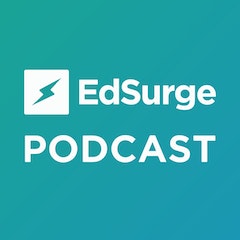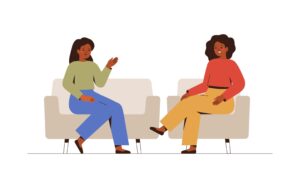How do we get insights to the people who need them the most?
This statement has guided the Feedback Loops work at Digital Promise over the last two years as we’ve explored ways different communities can collaborate to improve education. Looking forward, this will become even more important as the speed of edtech product life cycles increase, as evidenced by the recent release and adoption of generative AI tools across the landscape. Engaging in research and design work with communities of researchers, practitioners and edtech product developers has led us to define several principles we believe will assist in building learning technology that is attuned to the needs of diverse students and educators, based on modern learning principles and designed for broad adoption and scale.
Whether something as commonplace as curriculum adoption in a district or as unique as a research hub, considering how parties might contribute to and benefit from their interactions in education initiatives will lead to more and higher-quality insights shared among participants. The feedback loop concept is a systems-thinking way of approaching collaboration between communities, focused on mutual benefit through capacity building. In a feedback loop, participants experience a transformation of their knowledge, actions or goals while contributing their expertise to an initiative. The following principles can be used to deepen existing collaborations between educators and edtech products, generate ideas for structuring new projects and initiatives and reflect on how impactful technology is developed, adopted and implemented.
Guiding Principles for Building Feedback Loops
1. Design for Mutual Benefit
In projects that look to transform education and build impactful edtech, creating a plan for how partners work together is just as important as the final result. Careful consideration of bidirectionality — ensuring mutual benefit via changes in knowledge, actions or goals — is a key component to producing successful projects that create impactful outputs and meaningful change in the participants.

2. Find a Facilitator
In our pilot work with research, product and practice communities, each identified that a dedicated and trusted third-party facilitator would be a welcome addition to any project that worked across their areas of expertise. A facilitator plays many roles, including project manager, content and context expert, translator/communicator and more, depending on the needs of the participants. Utilize a facilitator who can work across communities and empower them to influence the direction of the work.
3. Attend to Continuity, Consensus and Customization
In a design convening where researchers, edtech product developers and practitioners came together to prototype cross-community feedback loops, we heard clearly that educators deal with a lack of continuity in the products they use, missing consensus among levels of the school systems in which they work and insufficient flexibility to build and create for their particular student needs. For any research and design project in a school context, consensus building among participants is paramount, as is ensuring the outputs of the work are targeted toward the needs of diverse student populations and that the resulting outputs can live independently of any research or efficacy study.
4. Lean Into the Tension
Tension in cross-community collaborations is natural and a result of misalignment between the rules, objectives and contexts of participants. However, this tension provides an opportunity to innovate and should be approached with curiosity. Our pilot participants identified many tensions between research, product and practice, including varying time cycles, capacity to scale and support many students, long-term sustainability and more, all of which served as the impetus to “design around” the constraints.
Applying the Feedback Loop Concept
“In imagining or creating something new, it’s hard to disentangle what you’ve experienced with what is possible.” — note from the Feedback Loops Design Convening
How might these guiding principles be put into practice? As generative AI becomes more commonly integrated into edtech, we see a need to build better research, vetting and use cases for these tools. One way to structure that using the feedback loop idea as a guide is a Research-Practice-Industry Partnership (RPIP). In an RPIP, we can connect partners across expertise to generate new knowledge of practitioner use of AI tools and suggest improvements to product features while preparing practitioners to use these tools more effectively in their classrooms.
“Teaching alongside AI facilitates teaching writing, providing feedback and implementing feedback within a reasonable timeframe,” says Aida Hadzovic, ELA teacher at PS 226 in Brooklyn, New York, and feedback loops project participant. Aida’s experience with AI in the classroom as a member of the Project Topeka team speaks to the need to build stronger feedback loops.
“We were able to discuss AI and equity and spent time writing and calibrating rubrics, learning how to give feedback, and differentiating between the feedback of a human versus AI, which remains part of my skill set even after the end of the project.” Hadzovic suggests that careful attention to structuring the interactions between educators and products is a path toward more successful edtech development and implementation. “There’s a delicate balancing act between learning and adapting a new program in our daily instruction; we need to continuously communicate, provide feedback and data, and collaborate, not solely at the end of the product’s usage.”
Using the principles outlined above to create collaborative structures is not limited to edtech product development or research; in fact, we encourage all education transformation stakeholders to use a feedback loop lens when considering how to carry out their work. If you seek guidance on building feedback loops, we’ve developed a Miro template that is free to use in your planning activities, along with a model library and other resources. If you are an edtech product developer who is currently engaged in feedback loop work with school districts, we encourage you to consider applying for our Practitioner-Informed Design Product Certification.
- SEO Powered Content & PR Distribution. Get Amplified Today.
- PlatoData.Network Vertical Generative Ai. Empower Yourself. Access Here.
- PlatoAiStream. Web3 Intelligence. Knowledge Amplified. Access Here.
- PlatoESG. Carbon, CleanTech, Energy, Environment, Solar, Waste Management. Access Here.
- PlatoHealth. Biotech and Clinical Trials Intelligence. Access Here.
- Source: https://www.edsurge.com/news/2024-01-31-collaborating-for-the-future-of-teaching-and-learning-with-technology
- :has
- :is
- :not
- :where
- a
- Able
- above
- across
- Act
- actions
- activities
- addition
- adopted
- Adoption
- After
- AI
- aida
- All
- along
- alongside
- among
- an
- and
- any
- Applying
- approaching
- ARE
- areas
- AS
- assist
- At
- attend
- attention
- balancing
- based
- BE
- become
- becomes
- believe
- benefit
- Better
- between
- broad
- Brooklyn
- build
- Building
- by
- came
- CAN
- Capacity
- careful
- carry
- cases
- change
- Changes
- classroom
- clearly
- collaborate
- collaborating
- collaboration
- collaborations
- collaborative
- commonly
- communicate
- Communities
- component
- concept
- Connect
- Consensus
- Consider
- consideration
- considering
- constraints
- content
- context
- contexts
- continuity
- continuously
- contribute
- contributing
- create
- Creating
- curiosity
- Currently
- Curriculum
- cycles
- daily
- data
- deal
- dedicated
- Deepen
- define
- Depending
- Design
- designed
- developed
- Developer
- developers
- Development
- different
- digital
- direction
- discuss
- district
- diverse
- do
- each
- edtech
- Education
- educators
- effectively
- efficacy
- empower
- encourage
- end
- engaged
- engaging
- ensuring
- equity
- Even
- evidenced
- existing
- experience
- experienced
- expert
- expertise
- Explored
- facilitates
- facilitator
- fact
- Features
- feedback
- FFF
- fill
- final
- Find
- Flexibility
- focused
- following
- For
- Forward
- Free
- from
- future
- generate
- generative
- Generative AI
- get
- Give
- Goals
- guidance
- guide
- guided
- guiding
- Hard
- heard
- How
- How To
- However
- HTTPS
- Hub
- human
- idea
- ideas
- identified
- if
- impactful
- implementation
- implemented
- implementing
- important
- improve
- improvements
- in
- Including
- Increase
- independently
- influence
- Initiative
- initiatives
- innovate
- insights
- integrated
- interactions
- into
- just
- Key
- knowledge
- Lack
- landscape
- Last
- lead
- learning
- Led
- Lens
- levels
- Library
- Life
- Limited
- live
- long-term
- Look
- looking
- manager
- many
- max-width
- meaningful
- member
- might
- missing
- model
- Modern
- more
- most
- mutual
- my
- Natural
- Need
- needs
- New
- New York
- news
- note
- objectives
- of
- on
- ONE
- Opportunity
- or
- Other
- our
- out
- outlined
- outputs
- over
- Paramount
- part
- participant
- participants
- particular
- parties
- partners
- path
- People
- pilot
- plan
- planning
- plato
- Plato Data Intelligence
- PlatoData
- plays
- populations
- possible
- practice
- preparing
- principles
- producing
- Product
- product development
- Products
- Program
- project
- projects
- promise
- prototype
- provide
- provides
- providing
- put
- reasonable
- recent
- reflect
- release
- remains
- research
- researchers
- Resources
- result
- resulting
- roles
- says
- Scale
- School
- see
- Seek
- served
- set
- several
- shared
- should
- skill
- solely
- something
- Speaks
- speed
- spent
- stakeholders
- Statement
- stronger
- structure
- structures
- structuring
- Student
- Students
- Study
- successful
- suggest
- Suggests
- support
- Sustainability
- Systems
- targeted
- teacher
- Teaching
- team
- Technology
- tensions
- that
- The
- The Future
- The Landscape
- their
- Them
- These
- they
- third-party
- this
- Through
- time
- timeframe
- Title
- to
- together
- tools
- toward
- Transform
- Transformation
- trusted
- two
- unique
- us
- Usage
- use
- used
- using
- utilize
- varying
- Versus
- via
- Way..
- ways
- we
- welcome
- were
- What
- What is
- when
- which
- while
- WHO
- will
- with
- within
- Work
- work together
- worked
- would
- writing
- years
- york
- you
- Your
- zephyrnet












